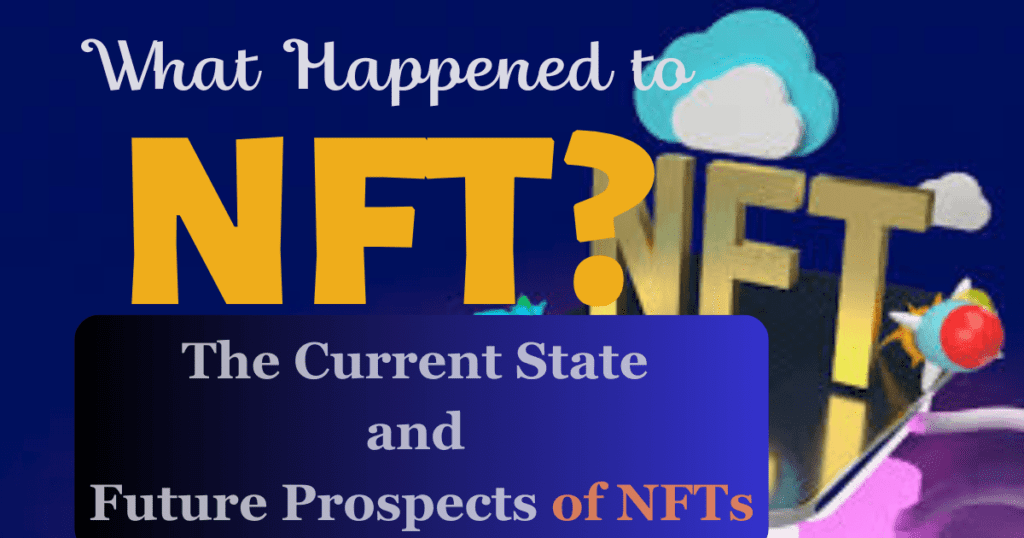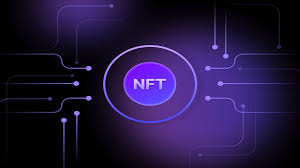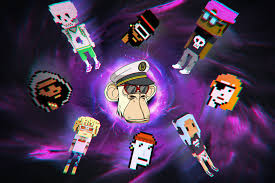Explore the future outlook of NFTs and discover what has happened to NFTs in recent times. NFTs, or non-fungible tokens, emerged as a digital sensation in 2021, attracting billions of dollars in sales and captivating celebrities, artists, investors, and finance enthusiasts alike. However, as the initial frenzy subsided, the NFT industry found itself at a crossroads, prompting us to question: What happened to NFTs, and are they now considered a fading trend?
Understanding NFTs
NFTs, or non-fungible tokens, are specialized digital assets that are challenging to trade for other commodities. They represent the height of creativity in the digital world and encompass many objects including digital art, collectibles, movies, music, and more. Memes and digital artifacts can be authenticated as belonging to their true owners through the use of NFTs.
After the exhilarating peak witnessed in 2021, NFTs struggled to sustain their meteoric growth. According to NFT data, Clouds of doubt are looming over the future of NFTs, especially in the field of digital arts and finance, as daily sales volumes have dropped by an astonishing 90% since January 2022.
In this article, we set out on a quest to examine the prospects of NFTs for the future and to learn in-depth about their current status. Is it really true that NFTs are threatened with extinction?
A Glimpse into the NFT Market
The journey of NFTs began to gain momentum back in 2017, with Ethereum introducing token standards that allowed developers to create and deploy tokens associated with their art. This marked the inception of Crypto Punks, a venture by software developers Matt Hall and John Watkinson.
The NFT frenzy continued to escalate in 2019, catalyzed by Canadian singer Grimes, who raked in millions through simple digital art sales. By 2021, Grimes had amassed over $6 million in NFT earnings. Additionally, the sale of ‘Nyan Cat,’ a nostalgic internet meme from 2011, for over $600,000 further fueled the craze.
NFT gaming and the metaverse phenomenon introduced Decentraland, a virtual VR platform on the Ethereum Blockchain, allowing players to collect unique items while engaging in gameplay.
All these developments set the stage for a mainstream NFT takeover, which indeed transpired in 2021. During this period, NFTs were trading at an unprecedented pace, with enthusiasts and newcomers alike eager to participate.
The Pinnacle of 2021
The art market played a pivotal role in propelling NFTs to their zenith. Christie’s made a staggering $69 million from NFT sales, causing a stir in the industry as well-known auction houses like Sotheby’s and Christie’s entered the digital arena. NFTs were traded across various platforms, including business-to-business (B2B), business-to-consumer (B2C), and consumer-to-consumer (C2C), as well as more digital art artists who entered the fray.
Another significant boost came from Facebook’s transformation into Meta and its foray into the metaverse, which further intensified interest in digital tokens.
2022 marked a peak in NFT transactions, with OpenSea, the largest NFT marketplace, reporting over $4.87 billion in sales for January alone.
What Happened to NFTsThe Present Challenges and Criticisms
As is customary with most investment trends, the dip in NFT popularity ushered in a new set of challenges and criticisms. One of the most prominent issues is the lack of regulation and the potential for fraud. Price floors, in particular, seem to be more regulated than price caps, with breaches leading to significant drops in NFT values. This lack of regulation also extends to determining what can and cannot be sold as an NFT, resulting in price fluctuations and uncertainty.
Environmental concerns related to NFTs and Blockchain technology have also gained prominence. The energy consumption of Blockchain networks, particularly those relying on Proof of Work (PoW) consensus mechanisms like Ethereum and Bitcoin, has raised ecological alarms. Reports suggest that a single NFT can have the carbon footprint of four trees, exacerbating environmental issues.
Furthermore, the speculative nature of the NFT market, similar to the broader cryptocurrency market, has drawn criticism. Unwarranted speculation has caused NFT values to fluctuate dramatically, leaving investors grappling with rapid losses.
The Celebrity Factor and Market Oversaturation
Celebrity endorsements played a significant role in the 2021 NFT boom, with figures like Jimmy Fallon, Gwyneth Paltrow, Paris Hilton, Justin Bieber, and Madonna promoting NFTs. However, as the market waned, some celebrities distanced themselves from NFTs, leading to lawsuits questioning the nature of their endorsements.
Market oversaturation with low-quality NFTs emerged as another challenge. The influx of subpar tokens diminished buyer confidence and obscured the value of rare and meaningful NFTs.
The Current State of NFTs
The first two quarters of 2023 have witnessed the decline of many NFT projects, with financial activity reaching record lows after the peak in January 2022. Recent research from analytics firm Nansen indicates that one in three NFT collections has essentially expired, with operational NFTs trading below the costs of minting.
Comparing NFTs to ICOs
The current state of NFTs bears resemblance to the Initial Coin Offering (ICO) frenzy of 2017 and its subsequent downfall in 2018. Much like ICOs, NFTs experienced a surge in interest followed by a decline. In 2023, trading on OpenSea dropped by over 66 percent in March.
Future Prospects and Potential
Despite the present challenges, NFTs hold promise for the future. Their potential extends beyond art and collectibles into realms like digital identity and ownership, tokenization of real-world assets, and the gaming industry. NFTs also offer opportunities for artists in the music industry to tokenize their work.
The Evolution and Maturation of the NFT Market
As the NFT market continues to grow, increased standardization and interoperability between platforms and Blockchain are expected. This will facilitate seamless transactions and collaborations across ecosystems. Diversification into new asset classes and use cases is also anticipated, leading to a more stable and sustainable market.
Conclusion
In conclusion, while concerns about the future of NFTs are valid, they are far from dead. The industry is undergoing a necessary correction, akin to a detox, where low-quality tokens are being purged. The future of NFTs may rely on real-world applications, emphasizing utility over speculation, with potential applications in various industries. As the market matures, NFTs could find their footing once again and establish themselves as valuable assets in the digital landscape.
FAQs
Q1. How popular is the NFTs now?
Ans: It was only in 2021 that NFT was widely accepted. The two most famous collections are the Cryptopunks and Bored App Yacht Club NFT collections, which sold at maximum prices of $24 million and $3.4 million, respectively. These NFTs are owned by celebrities like Jay-Z and Jimmy Fallon, making them status symbols.
Q2. How popular are NFTs today?
Ans: It also revealed that with around 6,000 different buyers, there are over 10,000 active wallets using NFT every day. According to the source, NFT sales volume in 2021 was about $24.9 billion, a significant increase from about $94.9 million in 2020.
Q3. Is NFT still profitable in 2023?
Ans: The market capitalization of NFTs has grown tenfold from 2019 to 2020, reaching around $340 million. Rapid growth also continued in 2021 and is still going on in 2023.
Q4. Are over 50% of all NFT sales below $200?
Ans: The Majority of NFTs Sell for Less Than $200. Most NFT sales (53.6%) are under $200, and more than one-third of them are priced under $100. According to research made public by Nonfungible.com, the average price of NFT in the third quarter of 2022 was over $150 per NFT.
Q5. Is there a future in NFTs?
Ans: More decentralized ownership and revenue-sharing structures may be the focus of NFTs in the future. More efforts that employ NFTs to provide consumers direct ownership over their assets may emerge as our understanding of Blockchain technology and NFTs expands, bridging the gap between the real and digital worlds.
Q6. Are NFTs still active?
Ans: The United States, whose revenues are currently among the highest in the world, is growing steadily. According to Statista Market Insights, NFT revenue in the U.S. market is projected to reach $781.9 million in 2023, with an annual growth rate of 18.48% from 2023 to 2027.
You may also like:


